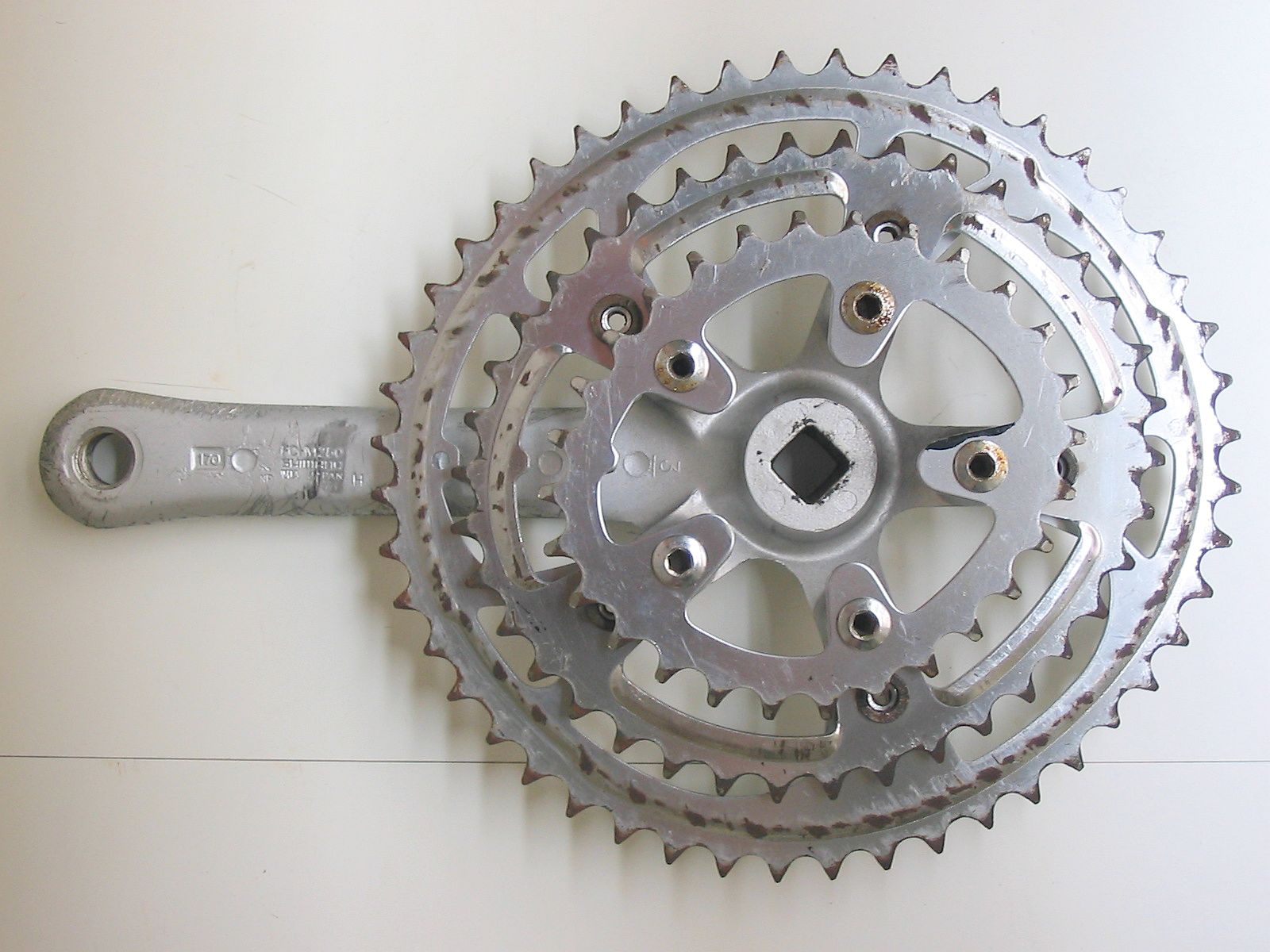Biopace on:
[Wikipedia]
[Google]
[Amazon]

 Biopace is a tradename for a type of ovoid bicycle chain ring manufactured by
Biopace is a tradename for a type of ovoid bicycle chain ring manufactured by

 Biopace is a tradename for a type of ovoid bicycle chain ring manufactured by
Biopace is a tradename for a type of ovoid bicycle chain ring manufactured by Shimano
, originally and later , is a Japanese multinational manufacturing company for cycling components, fishing tackles and rowing equipment, who also produced golf supplies until 2005 and snowboarding gear until 2008. Named after founder Shozabu ...
from 1983 to 1993
The design was intended to help overcome the "dead zone" where the crank arms are vertical and riders have little mechanical advantage
Mechanical advantage is a measure of the force amplification achieved by using a tool, mechanical device or machine system. The device trades off input forces against movement to obtain a desired amplification in the output force. The model for ...
.
Biopace chainrings have a reduced chainring diameter coinciding with the cranks being horizontal. This is supposed to smooth the pedaling action, allowing the rider's feet to carry more momentum through the power stroke, and having it smoothly removed at the bottom of the stroke rather than encouraging riders to push bigger gears and risk knee damage due to higher knee joint loadings.
This is different from the design of other oval style chainrings, which have the smaller effective chainring diameter coincide with the cranks being at the top and bottom dead center (TDC and BDC), thus making the crank easier for the rider to turn through BDC for constant chain tension. By having the chainring at its peak effective diameter with the cranks level, where the rider has maximum leverage over the crank during the power stroke, these designs are supposed to make better use of the rider's power output.
Some cyclists find the benefits of Biopace worthwhile, including well-respected bike mechanic Sheldon Brown. Some riders may also value a Biopace crankset for its historical accuracy on a vintage bike, for its novelty value, or even retro-cachet.
See also
*Crankset
The crankset (in the US) or chainset (in the UK), is the component of a bicycle drivetrain that converts the reciprocating motion of the rider's legs into rotational motion used to drive the chain or belt, which in turn drives the rear wheel ...
* Osymetric
References
{{reflist Bicycle drivetrains